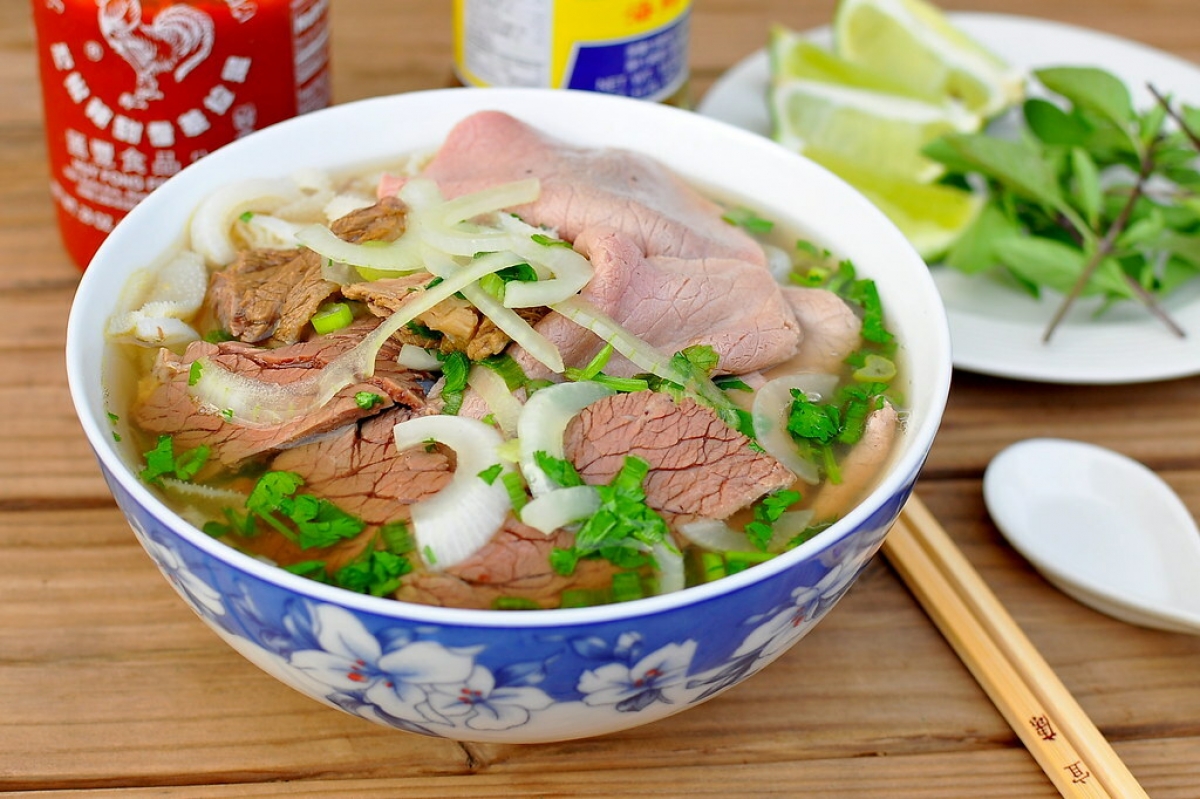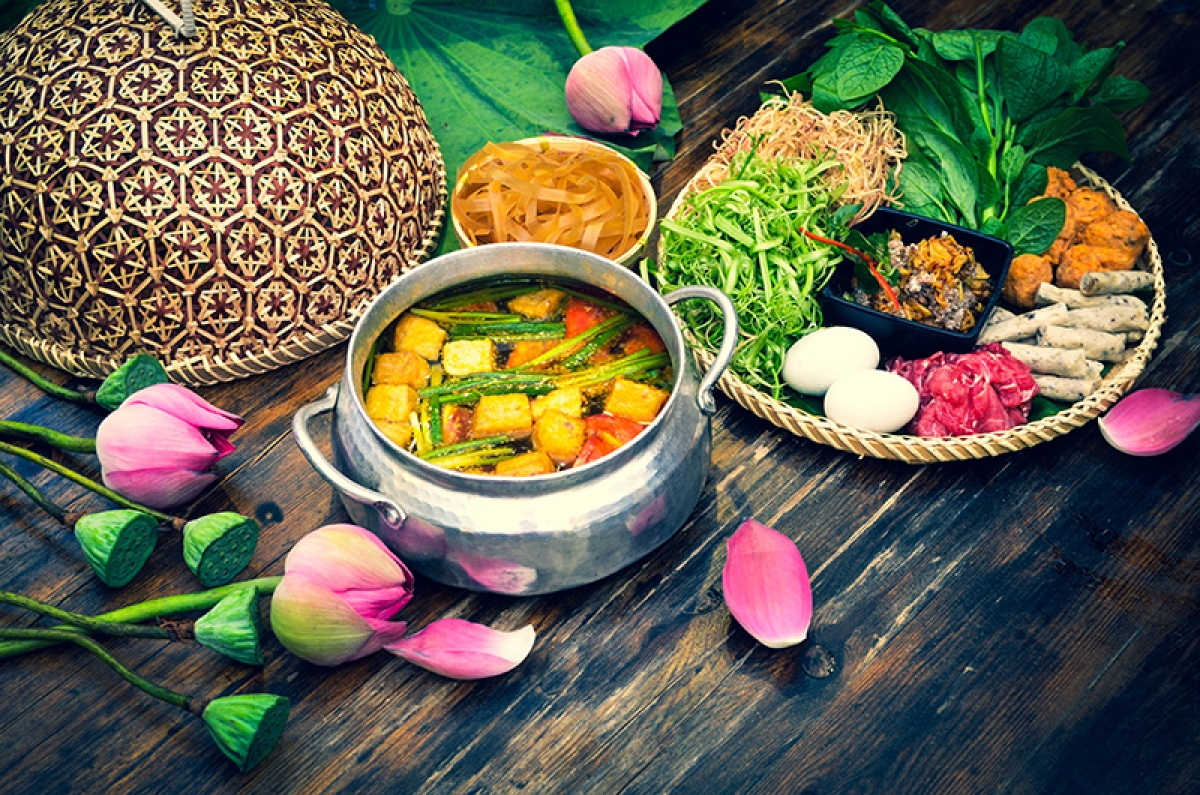

Vietnamese cuisine has become an important part of building an impressive image and brand to attract greater tourist numbers, meaning opening the prospect of exploring culinary values is an important way in which to develop Vietnamese tourism.
As part of the Government’s cultural development strategy towards 2030, Vietnam aims to have three cities in the UNESCO’s Creative Cities Network across many fields, including cuisine.
Imprints of Vietnamese Phở (noodle soup)
Phở (noodle soup) is one of the most typical dishes consumed each day by Vietnamese people across the country, and this dish becomes famous worldwide.
Since 2018, December 12 has been observed as the Day of Phở to honour Vietnamese cuisine both at home and abroad.
The Ngày của Phở (Day of Phở) has even been acknowledged by Google, as 20 countries including the United Kingdom, the United States, Canada, Israel and Austria display a Google Doodle of the Vietnamese dish on December 12.
In its caption for the Doodle, Google wrote, “today’s Doodle, illustrated by artist Lucia Pham, honours phở, Vietnam’s national dish – an aromatic soup brimming with savory broth, soft rice noodles, fresh herbs, and thinly sliced meat.”

Following the honouring of Bánh Mì (bread) in 2020, the Day of Phở continues to be a practical activity launched by Google to widely promote Vietnamese culture, cuisine, and tourism to the rest of the world.
It’s noteworthy that the three Vietnamese words: Áo Dài – the traditional long dress of Vietnamese women, Phở, and Bánh Mì have been added to Shorter Oxford English Dictionary since September 2007, representing a source of pride for Vietnamese people.
The attraction of Vietnamese cuisine
International tourists love Vietnamese food because its boasts a balance of taste and nutrition, plenty of fresh vegetables, no fat, and each dish in different regions features its own dipping sauce.
Many world class cooks such as British master chef Gordon Ramsay, the late famous American chef Anthony Bourdain, and New Zealand chef Bobby Chinn, who served as Vietnam Tourism Ambassador to Europe from 2014 to 2017, have tried hard to promote Vietnamese cuisine.
Most notably, a picture of former US President Barack Obama eating Bún chả (noodles with grilled meat) during his trip to Hanoi in 2016 went viral through social media, making a big push for Vietnamese cuisine. Many international visitors have since chosen to sample this dish as soon as they arrive in the country.
On October 5, the World Records Union (WorldKings) officially recognised five local world culinary records, including owning the most “strand and broth” dishes, the most kinds of Mắm (salted fish) and dishes made from Mắm with typical flavors, the most different kinds of special roll, the most dishes made from flowers, and the most dishes made from rice flour globally.
The country has twice been awarded the title of “Asia's Leading Culinary Destination” in 2019 and 2020 by the World Travel Awards (WTA), which helps popularize Vietnam’s culinary art among international friends.
According to the Vietnam National Administration of Tourism (VNAT), Vietnam boasts a special food service which makes a positive impression on tourists. Such a special service instils confidence in tourists wishing to discover the country’s culinary art, extend their stay, and increase average spending.
A special tourism ambassador on the spot

Nguyen Trung Khanh, head of VNAT, said recent times has seen Vietnamese cultural heritages and foods play their positive role as ‘a tourism ambassador’, contributing to attracting millions of international tourists to Vietnam.
In Southeast Asia, Vietnam is one of the countries that owns the most UNESCO World Heritage titles. Whilst being known for its richness, diversity, harmony, and delicacy, Vietnamese cuisine is considered to be a cultural heritage and a valuable tourism resource, Khanh noted.
As a result, Vietnamese cuisine is an attractive tourist product for domestic and international travellers. Tourism promotion campaigns, from tourism fairs to food festivals, in recent times have always been associated with the promotion of culture and cuisine across the country.
The Ministry of Culture, Sports and Tourism recently approved a project aimed at building a national brand on cultural tourism, with the ultimate goal of further developing the value of cultural heritage and cuisine, as well as improving the economic efficiency and competitiveness of local tourism.
Accordingly, cultural tourism is anticipated to account for 20% to 25% of the total US$130 billion in total revenue earning from tourism services by 2030. Businesses are encouraged to invest in developing cultural tourism, especially cultural heritage and cuisine.
Source: VOV